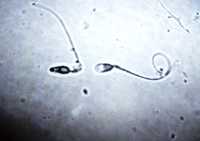Author Interviews, Autism, Fertility, Genetic Research / 12.01.2021
Epigenetic Sperm Changes Linked to Autism Risk
MedicalResearch.com Interview with:
Michael Skinner, PhD
Eastlick Distinguished Professor
Founding Director, Center for Reproductive Biology
School of Biological Sciences
Washington State University
Pullman WA
MedicalResearch.com: What is the background for this study?
Response: Over twenty years ago we identified the existence of a non-genetic form of inheritance through analysis of environmentally induced epigenetic transgenerational inheritance of disease, now well established in a number of species including humans. I was giving a talk on this topic at a meeting in Spain. This study was initiated following the scientific meeting in Spain with an in vitro fertilization clinical group that said they had access to sperm from males with and without autistic children. It took several years to collect and characterize the samples, and find financial support for the study. Once this was done then we did the molecular analysis to see if the sperm from fathers with autistic children had epigenetic, DNA methylation alterations, that associated with them having offspring with autism.
(more…)


